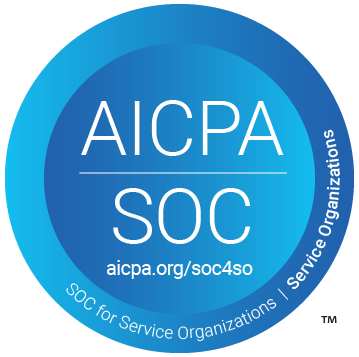
Exciting Changes Coming to Thinking Cap: Unlocking Greater Flexibility with Connections
Thinking Cap Blog | 2024-10-22
At Thinking Cap, we’re always looking for ways to make your learning experience more dynamic and customizable. That’s why we’re thrilled to announce the upcoming release of User Connections and Activity Connections—two powerful new tools designed to take your organizational workflows to the next level. Whether it’s streamlining supervisory relationships or fine-tuning activity roles, these enhancements are built to adapt to your needs without adding complexity. Ready to explore greater flexibility while maintaining the simplicity you love? Read on to discover how we’re evolving!
User Connections
Traditionally, Learning Management Systems (LMS) focus on connecting users to learning activities. However, there are many situations where it’s essential to connect individuals within an organization for different purposes. In the past, Thinking Cap’s LMS addressed this need through a Supervisor role. Supervisors had the ability to review user transcripts, manually enroll learners in activities, and provide sign-offs on assignments. While effective in certain situations, the static nature of this model quickly revealed its limitations. Not all relationships fit neatly into the Supervisor-Supervisee structure. Mentors, coaches, peers, and other roles required more flexibility in their interactions and permissions, and the manual assignment of roles proved cumbersome as organizational needs changed.
To address these challenges, we developed the User Connections system. This new framework supports a much broader range of relationship types and methods for connecting users, providing the flexibility to meet diverse organizational needs. Key features of the User Connections system include:
Flexible Methods for Creating Connections
Manual Connections: Roles are assigned directly by administrators, similar to the previous system.
Automatic Connections
The system automatically creates connections based on user metadata, such as job roles, skills, or learning goals.
Customizable Permissions for Each Connection Type
Each connection type can have its own unique set of permissions, ensuring that individuals in supervisory, mentoring, or collaborative roles have the appropriate level of access without the constraints of a one-size-fits-all model.
Integrated Workflows and Notifications
The system includes comprehensive workflows for managing connections as roles and responsibilities change. Notifications keep all participants informed as connections are created, modified, or dissolved.
At the heart of the User Connections system is the Source and Target framework. The Source is the individual who holds responsibility or oversight in the connection, while the Target is the individual receiving guidance, support, or collaboration. This structure allows for clarity and flexibility, accommodating a wide range of interaction types, from traditional supervision to peer support.
Activity Connections
In addition to improving user connections, we have also reimagined how users are linked to activities. Previously, roles such as Moderator, Teaching Assistant, Facilitator, and Speaker were rigidly defined for activity-related tasks. These roles served a purpose but didn’t always align with the diverse requirements our clients had for activity facilitation.
To resolve this, we introduced the Activity Connections system, which allows clients to define the types of connections users can have with activities and the specific permissions granted to each role. This new flexibility enables organizations to better match their unique workflows and needs.
Key features of the Activity Connections system include:
Customizable Activity Roles
Instead of using predefined roles, clients can now create and name their own connection types for activities. These connections can involve existing LMS users or external contacts, such as guest speakers who don’t require system permissions but can still be named for their contributions.
Definable Powers for Each Role
When creating a new activity connection type, clients can define the specific powers or permissions that role has over the activity. This allows for a tailored experience that fits the specific requirements of different activities.
Integration with Activity Settings
Once a new activity connection type is created, it becomes available in the Connections menu within the settings of each applicable activity. This allows for easy assignment and management of roles as activities evolve over time.
Just like with User Connections, the Activity Connections system represents another step forward in our goal to replace rigid, monolithic functions with rich, customizable systems. These features give organizations the ability to shape the learning process to fit their unique needs, providing a more dynamic and tailored learning experience.
Putting It Into Practice
The addition of the User Connections and Activity Connections systems is part of Thinking Cap’s continuous evolution toward greater flexibility and customization. By moving away from rigid, predefined roles and embracing a more adaptable, metadata-driven approach, we enable organizations to create stronger, more effective learning relationships and deliver activities with precision. These systems ensure that relationships, roles, and responsibilities can evolve naturally, allowing for a more personalized and responsive learning experience. Also, Connections are Branch based and like other functions can be set up anywhere in the tree and can be inherited to child branches. The Old Supervisor system was set at the Root branch and was used systemwide. Having a system that can be defined at any level allows for organizations to support multiple teams with their own business rules.
Next Steps
Nothing will change for you in terms of data migration. When this update is rolled out, all your existing data will seamlessly upgrade to the new system. Your current Supervisors will automatically appear as a Manual Connection Group within User Connections, and Moderators, Speakers, and Facilitators will be added to Activity Connections. In planning these changes, our top priority was ensuring that while we’re giving you powerful new tools, we’re not giving you new headaches. Everything will be where you expect it, just with enhanced functionality.
Please connect support if you have any questions, concerns or if you wish to book some one-on-one training on how this all works and to brainstorm on ways you could use it in your organization.
Where Will I See These Changes?
Here is a list of where to find the many changes that are part of this work.
Administrative View Changes
Branch Menu > Settings > Activities:
"Activity Connections" are now available for Defaults and Wizards like other activity settings.
Branch Menu >Settings > Instructor Led:
The "Session Wizard" tab now includes Activity Connections, which replace the previous Speaker and Facilitator roles.
Branch Menu > Resources > Contacts (new):
A new section called Contacts lists external users known to the system. These can be added from an activity's Activity Connection or directly here.
Branch Menu > Security > Supervisors (deprecated):
The Supervisors option has been removed.
Branch Menu > Connections (new):
A new "Connections" menu sits between "Security" and "Experience," containing User Connections and Activity Connections where all connections can be managed.
Branch Menu > Experience > Branding > Navigation:
The "My Connections" tab now lets you show or hide this page, which displays all User Connections and Activity Connections a user is involved in.
Branch Menu >Communications > Notifications:
The Manage Recipients section now supports Activity and User Connections as notification recipients. The "Supervisor Digest" option has been replaced with the ability to select from all defined connection types.
Branch Menu > Integrations > User Synchronization:
You can now map fields to all User Connections that allow explicate connections, not just Supervisors.
Explore View > Activities > Activity Settings:
If any Activity Connections are defined for an activity, you’ll now see a Connections setting to manage these.
Explorer View > Activities > Activity Settings (ILT and Custom Activities based on ILT):
For ILTs, the session settings now show Session-Level Activity Connections with an option to modify them.
Explorer View > Users > User Settings
The setting for Supervisors has been replaced with Connections. From here you can view a User’s User Connections and Activity Connections. If explicit connections are allowed for a User Connection Type you can adjust them for the user here.
Learner View Changes
Supervisor View > Learners Tab
The "Supervisor View" page is now called Connections Hub. Tabs for "Learners" are renamed Connections and reflect all users with whom you have connections. Available actions depend on the connection type.
Supervisor View > Tasks Tab
The Tasks tab now includes actions like approving enrollment requests or signing off on attestations, based on permissions from the Activity Connections.
Supervisor View > Connections Tab
The "Supervisor View" page is now called Connections Hub. Tabs for "Learners" are renamed Connections and reflect all users with whom you have connections. Available actions depend on the connection type.
My Profile
The My Profile Page has been updated to show both User Connections and Activity Connections.
My Connections
The My Connections Page has been updated to show both User Connections and Activity Connections.
The introduction of User Connections and Activity Connections brings greater flexibility to Thinking Cap, allowing you to customize roles and relationships within your organization. These tools streamline workflows, enhance collaboration, and adapt to your specific needs without complicating your current setup. Want to learn more or explore how these updates can benefit your team?
Request a personalized demoShare this article




